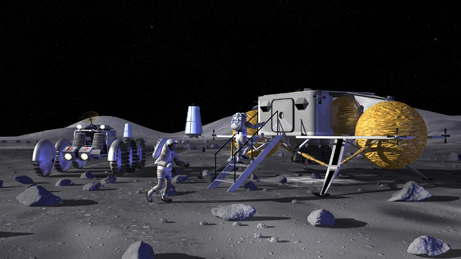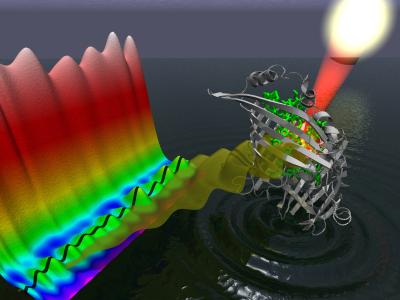Cross posted from Next big future by Brian Wang, Lifeboat foundation director of Research
I am presenting disruption events for humans and also for biospheres and planets and where I can correlating them with historical frequency and scale.
There has been previous work on categorizing and classifying extinction events. There is Bostroms paper and there is also the work by Jamais Cascio and Michael Anissimov on classification and identifying risks (presented below).
A recent article discusses the inevtiable “end of societies” (it refers to civilizations but it seems to be referring more to things like the end of the roman empire, which still ends up later with Italy, Austria Hungary etc… emerging)
The theories around complexity seem me that to be that core developments along connected S curves of technology and societal processes cap out (around key areas of energy, transportation, governing efficiency, agriculture, production) and then a society falls back (soft or hard dark age, reconstitutes and starts back up again).
Here is a wider range of disruption. Which can also be correlated to frequency that they have occurred historically.
High growth drop to Low growth (short business cycles, every few years)
Recession (soft or deep) Every five to fifteen years.
Depressions (50−100 years, can be more frequent)
List of recessions for the USA (includes depressions)
Differences recession/depression
Good rule of thumb for determining the difference between a recession and a depression is to look at the changes in GNP. A depression is any economic downturn where real GDP declines by more than 10 percent. A recession is an economic downturn that is less severe. By this yardstick, the last depression in the United States was from May 1937 to June 1938, where real GDP declined by 18.2 percent. Great Depression of the 1930s can be seen as two separate events: an incredibly severe depression lasting from August 1929 to March 1933 where real GDP declined by almost 33 percent, a period of recovery, then another less severe depression of 1937–38. (Depressions every 50–100 years. Were more frequent in the past).
Dark age (period of societal collapse, soft/light or regular)
I would say the difference between a long recession and a dark age has to do with breakdown of societal order and some level of population decline / dieback, loss of knowledge/education breakdown. (Once per thousand years.)
I would say that a soft dark age is also something like what China had from the 1400’s to 1970.
Basically a series of really bad societal choices. Maybe something between depressions and dark age or something that does not categorize as neatly but an underperformance by twenty times versus competing groups. Perhaps there should be some kind of societal disorder, levels and categories of major society wide screw ups — historic level mistakes. The Chinese experience I think was triggered by the renunciation of the ocean going fleet, outside ideas and tech, and a lot of other follow on screw ups.
Plagues played a part in weakening the Roman and Han empires.
Societal collapse talk which includes Toynbee analysis.
Toynbee argues that the breakdown of civilizations is not caused by loss of control over the environment, over the human environment, or attacks from outside. Rather, it comes from the deterioration of the “Creative Minority,” which eventually ceases to be creative and degenerates into merely a “Dominant Minority” (who forces the majority to obey without meriting obedience). He argues that creative minorities deteriorate due to a worship of their “former self,” by which they become prideful, and fail to adequately address the next challenge they face.
My take is that the Enlightenment would strengthened with a larger creative majority, where everyone has a stake and capability to creatively advance society. I have an article about who the elite are now.
Many now argue about how dark the dark ages were not as completely bad as commonly believed.
The dark ages is also called the Middle Ages
Population during the middle ages
Between dark age/social collapse and extinction. There are levels of decimation/devastation. (use orders of magnitude 90+%, 99%, 99.9%, 99.99%)
Level 1 decimation = 90% population loss
Level 2 decimation = 99% population loss
Level 3 decimation = 99.9% population loss
Level 9 population loss (would pretty much be extinction for current human civilization). Only 6–7 people left or less which would not be a viable population.
Can be regional or global, some number of species (for decimation)
Categorizations of Extinctions, end of world categories
Can be regional or global, some number of species (for extinctions)
== The Mass extinction events have occurred in the past (to other species. For each species there can only be one extinction event). Dinosaurs, and many others.
Unfortunately Michael’s accelerating future blog is having some issues so here is a cached link.
Michael was identifying manmade risks
The Easier-to-Explain Existential Risks (remember an existential risk
is something that can set humanity way back, not necessarily killing
everyone):
1. neoviruses
2. neobacteria
3. cybernetic biota
4. Drexlerian nanoweapons
The hardest to explain is probably #4. My proposal here is that, if
someone has never heard of the concept of existential risk, it’s
easier to focus on these first four before even daring to mention the
latter ones. But here they are anyway:
5. runaway self-replicating machines (“grey goo” not recommended
because this is too narrow of a term)
6. destructive takeoff initiated by intelligence-amplified human
7. destructive takeoff initiated by mind upload
8. destructive takeoff initiated by artificial intelligence
Another classification scheme: the eschatological taxonomy by Jamais
Cascio on Open the Future. His classification scheme has seven
categories, one with two sub-categories. These are:
0:Regional Catastrophe (examples: moderate-case global warming,
minor asteroid impact, local thermonuclear war)
1: Human Die-Back (examples: extreme-case global warming,
moderate asteroid impact, global thermonuclear war)
2: Civilization Extinction (examples: worst-case global warming,
significant asteroid impact, early-era molecular nanotech warfare)
3a: Human Extinction-Engineered (examples: targeted nano-plague,
engineered sterility absent radical life extension)
3b: Human Extinction-Natural (examples: major asteroid impact,
methane clathrates melt)
4: Biosphere Extinction (examples: massive asteroid impact,
“iceball Earth” reemergence, late-era molecular nanotech warfare)
5: Planetary Extinction (examples: dwarf-planet-scale asteroid
impact, nearby gamma-ray burst)
X: Planetary Elimination (example: post-Singularity beings
disassemble planet to make computronium)
A couple of interesting posts about historical threats to civilization and life by Howard Bloom.
Natural climate shifts and from space (not asteroids but interstellar gases).
Humans are not the most successful life, bacteria is the most successful. Bacteria has survived for 3.85 billion years. Humans for 100,000 years. All other kinds of life lasted no more than 160 million years. [Other species have only managed to hang in there for anywhere from 1.6 million years to 160 million. We humans are one of the shortest-lived natural experiments around. We’ve been here in one form or another for a paltry two and a half million years.] If your numbers are not big enough and you are not diverse enough then something in nature eventually wipes you out.
Following the bacteria survival model could mean using transhumanism as a survival strategy. Creating more diversity to allow for better survival. Humans adapted to living under the sea, deep in the earth, in various niches in space, more radiation resistance,non-biological forms etc… It would also mean spreading into space (panspermia). Individually using technology we could become very successful at life extension, but it will take more than that for a good plan for human (civilization, society, species) long term survival planning.
Other periodic challenges:
142 mass extinctions, 80 glaciations in the last two million years, a planet that may have once been a frozen iceball, and a klatch of global warmings in which the temperature has soared by 18 degrees in ten years or less.
In the last 120,000 years there were 20 interludes in which the temperature of the planet shot up 10 to 18 degrees within a decade. Until just 10,000 years ago, the Gulf Stream shifted its route every 1,500 years or so. This would melt mega-islands of ice, put out our coastal cities beneath the surface of the sea, and strip our farmlands of the conditions they need to produce the food that feeds us.
The solar system has a 240-million-year-long-orbit around the center of our galaxy, an orbit that takes us through interstellar gas clusters called local fluff, interstellar clusters that strip our planet of its protective heliosphere, interstellar clusters that bombard the earth with cosmic radiation and interstellar clusters that trigger giant climate change.



